Fukujinzuke (Japanese Pickles for Curry)
Ingredients
- 300 g daikon radish
- 75 g eggplant
- 50 g Japanese cucumber or Persian cucumber
- 10 g ginger root
- 2 tbsp salt
- 75 g lotus root (renkon) (renkon)
- 3 tbsp Japanese soy sauce (koikuchi shoyu)
- 2 tbsp dashi stock liquid (not powder) use plant-based dashi for vegetarians and vegans
- 3 tbsp red wine
- 3 tbsp light brown sugar
- 1 tbsp rice vinegar
- 5 g dried kelp (kombu)
Instructions
- Fill a large bowl with water just over halfway. Place the vegetables in the water as you cut to prevent discoloration. Peel 300 g daikon radish and cut lengthways into 4 slices. Cut each slice lengthways into 4 sticks, then line them up and thinly slice before dropping them into the water.
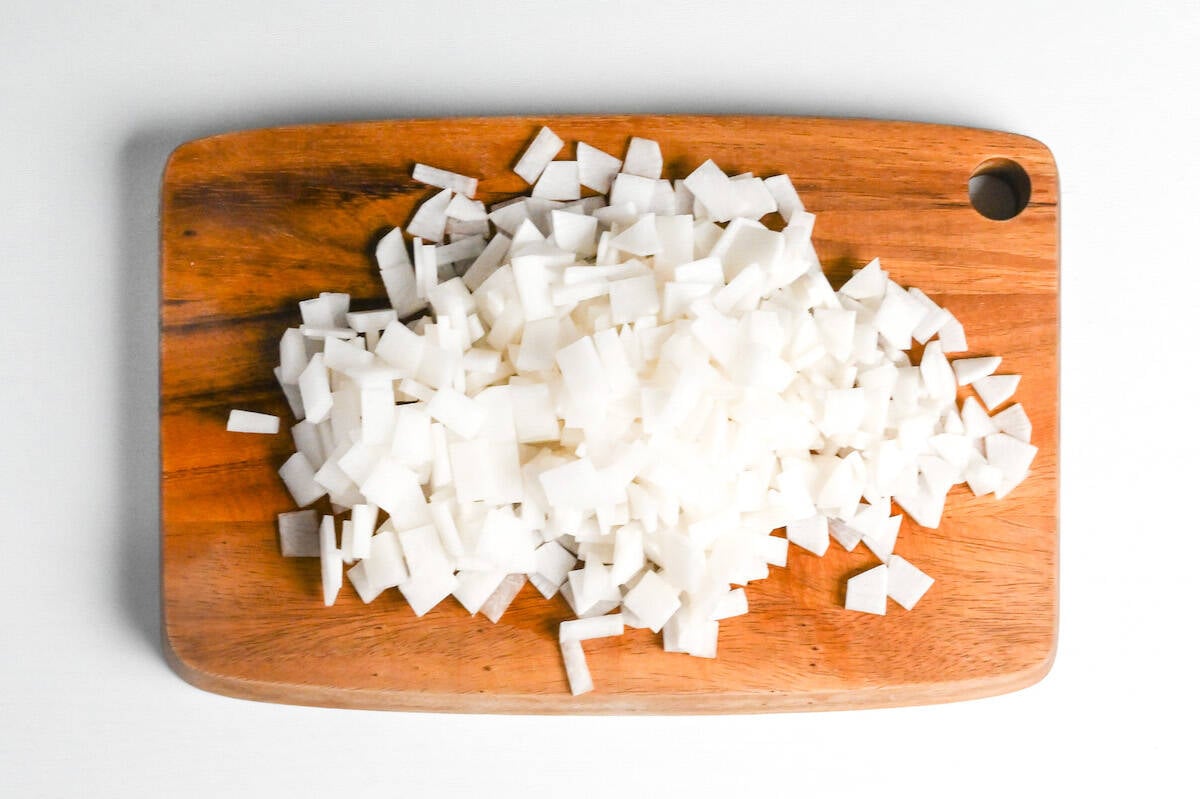
- Repeat this method with 75 g eggplant and then add to the water.
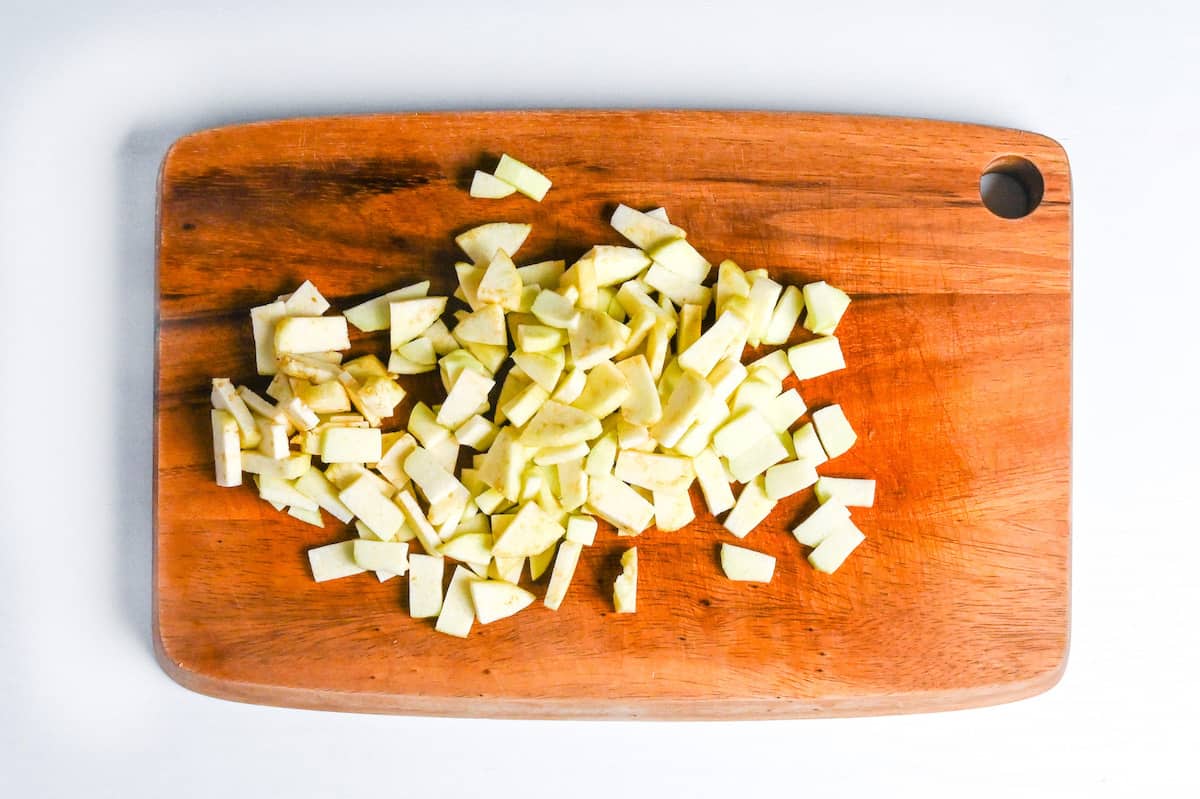
- Peel 50 g Japanese cucumber and remove the ends. Cut in half lengthways (or quarters if the cucumber is thick) then thinly slice before adding to the water.
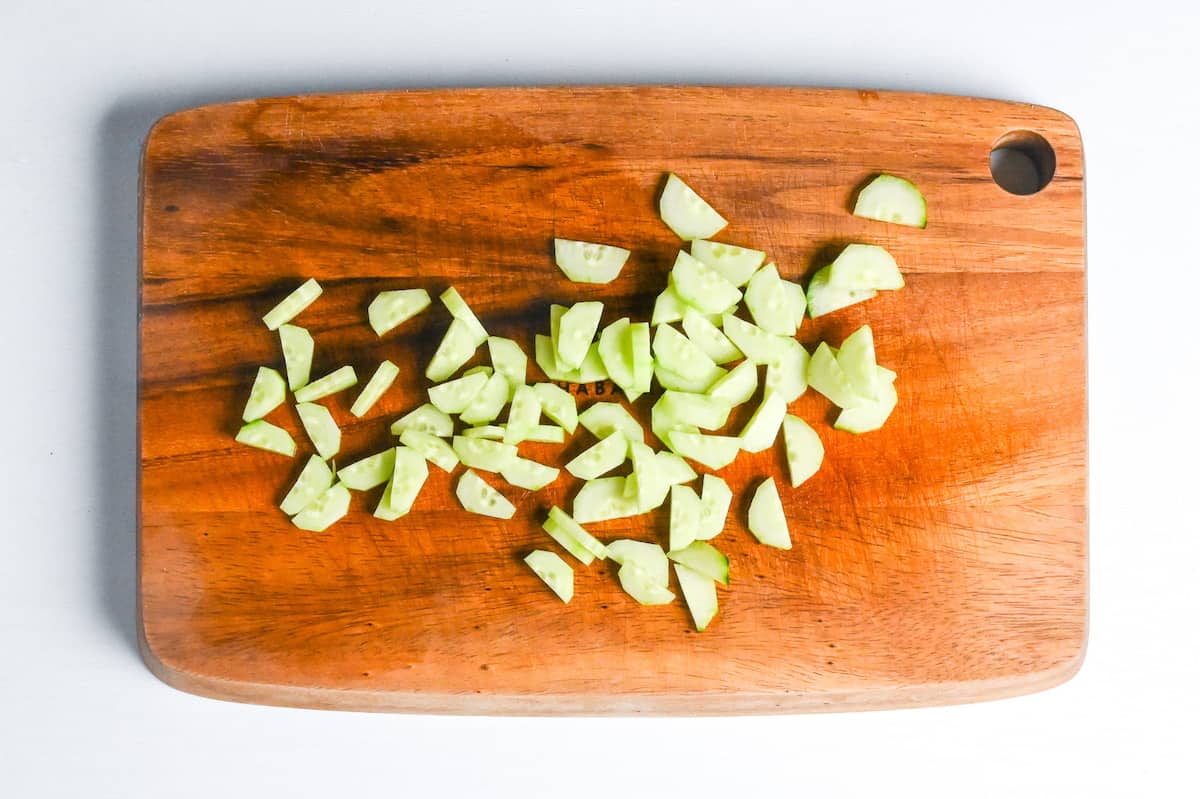
- Peel and finely dice 10 g ginger root. Drain the water from the bowl and add the ginger and 2 tbsp salt. Mix thoroughly and rest for 20 minutes to allow the salt to draw out the excess moisture. While you wait, prepare the lotus root and pickling liquid.
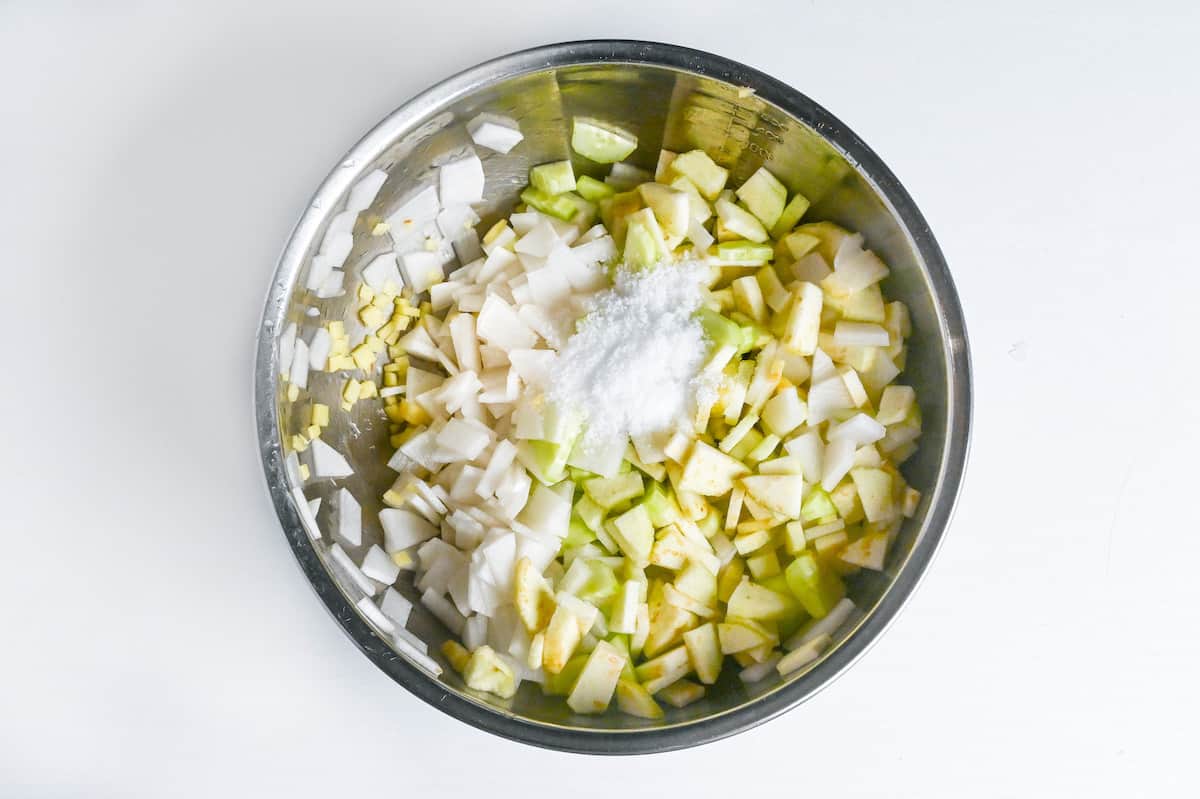
- Start heating a small pot of water. Peel and thinly slice 75 g lotus root (renkon), then cut each slice into small pieces.

- Once the water is boiling, add the lotus root and boil for 1 minute. After 1 minute, drain and cool.

- Take a saucepan and add 3 tbsp Japanese soy sauce (koikuchi shoyu), 2 tbsp dashi stock, 3 tbsp red wine, 3 tbsp light brown sugar and 1 tbsp rice vinegar. Heat on medium and boil for 2-3 minutes, then remove from the heat and cool.

- Once 20 minutes have passed, you should find that the bowl of vegetables has accumulated water. Pour through a sieve to drain and squeeze out as much liquid as you can.
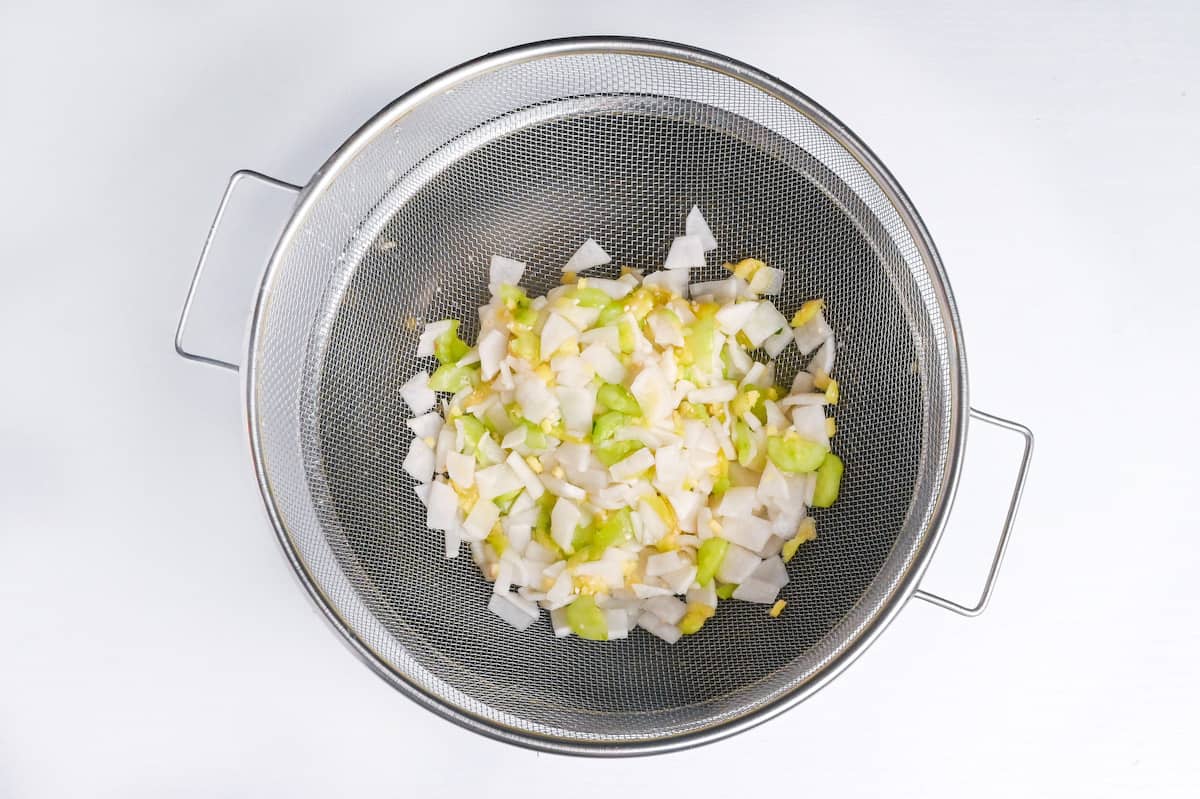
- Transfer the vegetables to a sealable freezer bag and add the renkon, cooled pickling liquid and 5 g dried kelp (kombu). Push the air out and seal, then store in a container to prevent any leaks. Refrigerate for at least 12 hours.
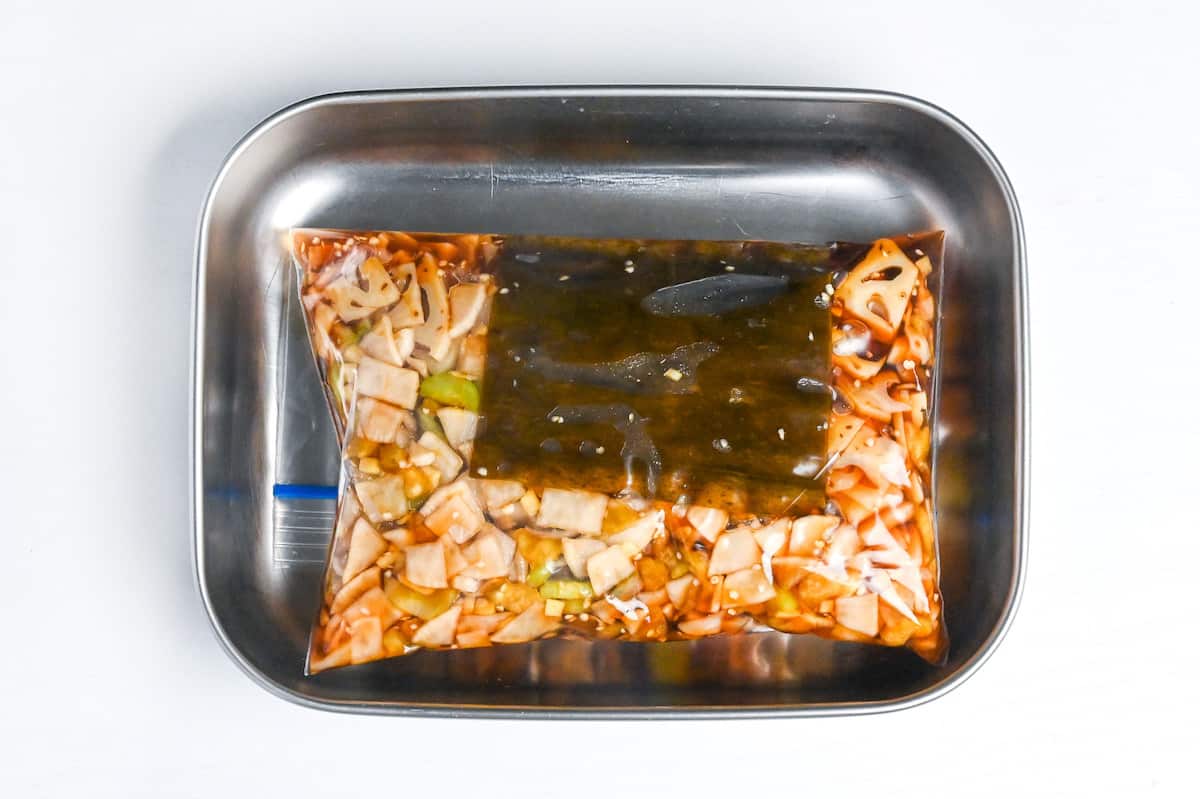
- Enjoy with Japanese curry rice!
Notes
- Note that store-bought fukujinzuke and the wholesale version served at chain restaurants in Japan has a red color, but this is achieved using red food coloring. My homemade recipe does not use any artificial coloring, so the finished fukujinzuke will have a natural orangey-brown color instead.
- In my experience, the flavor improves every day and tastes the best on the third day!
- Note: The nutritional information includes the pickling liquid.